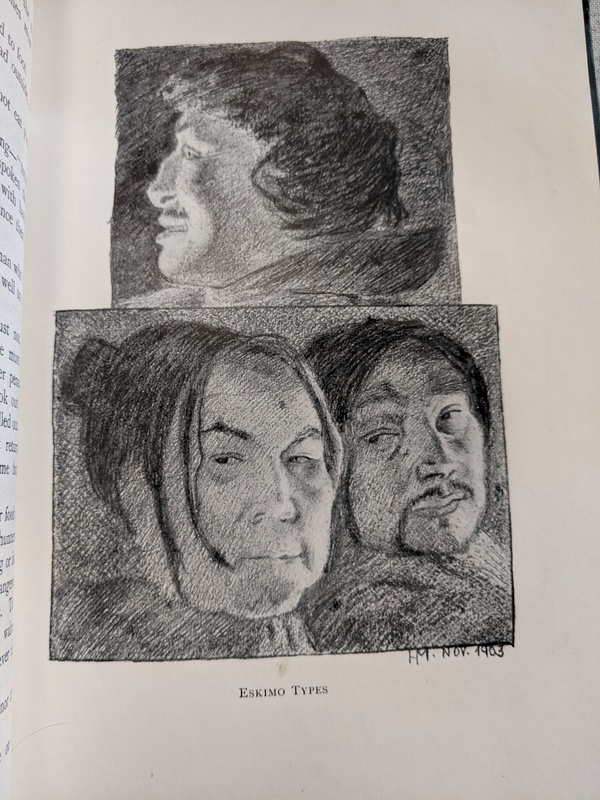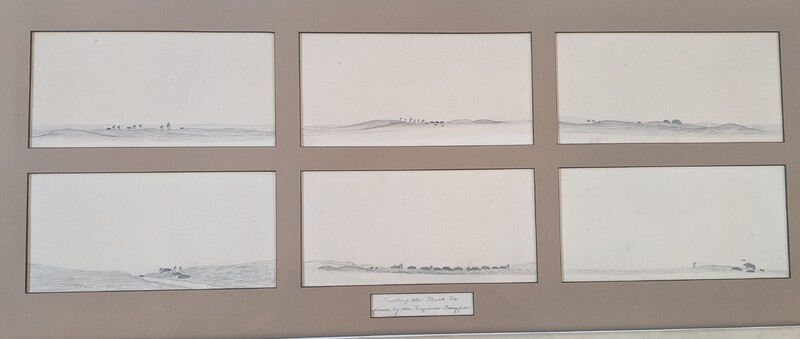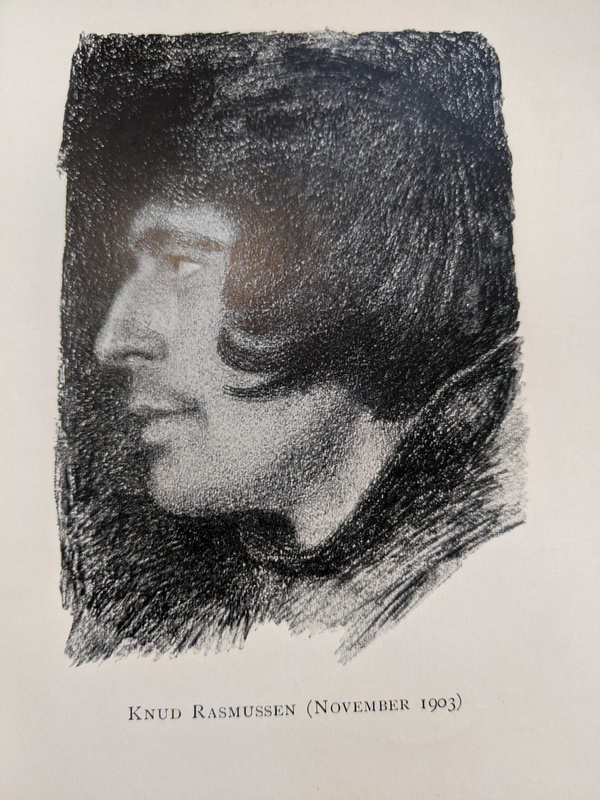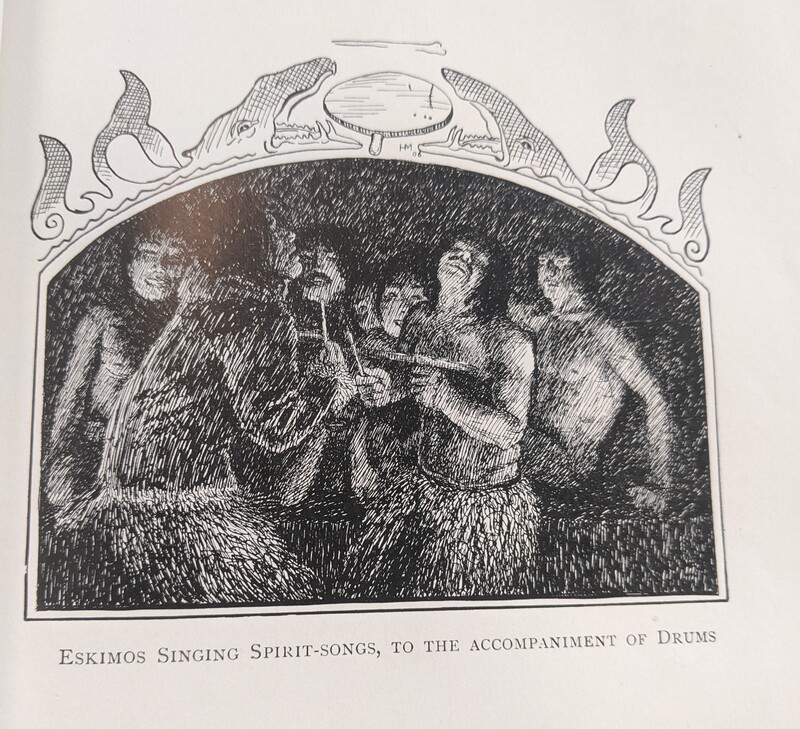Inuit Perceptions of the Explorers
Much is written on what explorers thought of the inuit as they analyzed and applied anthropological methods to study them. However it is important to understand how the inuit perceived these explorers both to assess the subjectivity of the explorers accounts of the inuit but also to subvert the narrative of the active explorer and the passive Inuit who were ‘explored’. Especially when the reality was that these explorers never would have reached their destinations or survived without their inuit fellow explorers and guides.
There is a dearth of information on what the inuit thought of the early 20th century explorers except through their art and the written records of the explorers that record quotes from inuit people. From it we can deduce a few themes of what inuit people in the early 20th century thought of explorers such as Rassmussen and Steffanson.
Hunters
This sketch of a musk ox hunt by Panypar, is a great example of an inuit person’s perception of visitors to the North. Panypar was an inuit hunter who guided American trophy hunters. During one such expedition he drew a series of sketches of the ox hunt from start to finish. In it, you see figures, some larger and some smaller. Given the lack of information provided from the artists it is hard to discern the nuance of his thoughts on the American hunters. It seems overall he sees them as pursuing a similar practice as their own. My assumption is that the taller people pictured may be the Americans because they probably stood out as odd in the surroundings but otherwise are not differentiated from the inuit hunters. Hunting would have been a practice particularly salient to them. Much less strange than other explorers who were intent on philosophizing and scientifically measuring their surroundings.
Rasmussen's Perception
Knud Rasmussen’s mother was greenlandic and raised in greenland so we can take his opinions of the arctic as somewhat reflective of the inuit views of the place. In contrast to Stefanson’s “Friendly Arctic” Rasmussen sees the arctic as a place which can be brutal and deadly which he loves dearly. Stefanson was advertising a narrative so it is hard to discern his sincere beliefs but as an American he portrayed the arctic as a romantic and idealistic place.
"You think too much"
A common interaction recorded repeatedly was Inuit debating with the explorers on the importance of thought. The Inuit often believed the explorers philosophized too much rather than taking the world as it is.
"Once out hunting I asked an Eskimo who seemed to be plunged in reflection 'What are you standing there thinging about?'
He laughed at my question and said 'Oh! Ot os only you white men who go in so much for thinking. Up here we only think about out flesh-pits and of whether we have enough or not for the long dark of the winter. If we have meat enough, then there is no need to think. I have meat and to spare!'
I saw that I have insulted him by crediting him with thought"
Rasmussen
In other exerpts white explorers frame Inuit as being instinctual and animal like.
Inuit refer to the explorers as being unrooted and ignoring the most important attributes of life.
We see how the two communities have conflicting conceptions of civilization. White explorers see civilization as intellectual thought, and reducing the world for interpretability.
Inuit see civilization as sustenance, food, family, and fulfilling obligations.
This mismatch in values in many ways resembles modern questions of Traditional Ecological Knowledge vs. Western Scientific knowledge. There is a need for greater analysis of historical perceptions of inuit as well as publicization of contemporary inuit perspectives.




